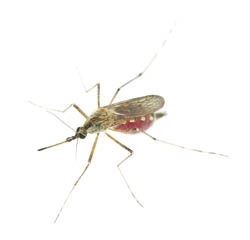Elucidating lipid biosynthesis in the malaria parasite
According to the World Health Organization (WHO), malaria remains one of the leading causes of mortality worldwide with 1 million deaths per year. It is caused by the unicellular protozoan parasite Plasmodium from the phylum Apicomplexa, and is transmitted by a mosquito vector. Apicomplexa parasites are unicellular eukaryotes and exhibit similarities in metabolic pathways with their animal hosts, hampering therapeutic targeting. However, a unique and vital element of Apicomplexa biology is the apicoplast, which was acquired through endosymbiosis with algae. Given its plant origin, the apicoplast represents a potential drug target against Apicomplexa-related diseases. Fatty acid synthesis in the apicoplast constitutes a promising pathway to target because it is critical for the plastid biogenesis and membrane synthesis. In this context, the EU-funded APICOLIPID project aimed to shed light on the apicoplast lipid metabolism and its role in the parasite's survival and proliferation. The scientific goals of the project entailed identification of the lipid products that are synthesised within the apicoplast, learning more about their downstream fate, and characterisation of the implicated enzymes. Scientists developed a novel method for apicoplast purification using magnetic antibodies against a tagged membrane protein and subsequent organelle retrieval with the aid of a magnet. For lipidomic profiling, gas chromatography (GC)- and liquid chromatography (LC) mass spectrometry were used to reveal that apicoplasts were rich in saturated fatty acids. Over 190 molecular species of lipids were detected in the apicoplast membranes, including cholesterol. Given that malaria parasites do not have a pathway for cholesterol synthesis, scientists concluded that this may be scavenged from the host erythrocyte and could be exploited as a therapeutic intervention. Phosphatidic acid (PA) is the unique precursor for most membrane lipids and the enzyme PfATS1, a glycerol-3-phosphate acyltransferase is responsible for its synthesis. The APICOLIPID study provided evidence that this pathway for PA synthesis exists in the apicoplast and that PfATS1 could serve as a potential drug target. Taken together, the findings of the APICOLIPID scientists offer new perspectives for metabolic intervention in the malaria parasite. Given the lack of anti-malaria vaccines and the emergence of parasite drug resistance to current treatments, the scientific community welcomes the development of such novel, targeted therapies for combating this deadly infectious disease.







